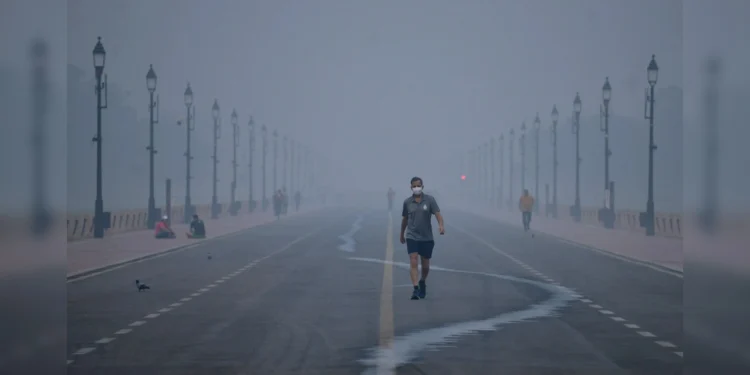Lagatar24 Desk
New Delhi: Delhi and its surrounding regions, including Noida, Ghaziabad, Gurugram, and Faridabad, woke up to a thick blanket of smog on Wednesday morning, causing significant visibility issues and flight disruptions. The severe air quality and poor visibility led to the diversion of 10 flights, including six to Jaipur and one to Lucknow, as zero-metre visibility was recorded at Indira Gandhi International Airport by 8:30 am.
The India Meteorological Department (IMD) reported that the Runway Visual Range (RVR) varied between 125 and 500 metres across different locations at the airport. Delhi International Airport Limited (DIAL) advised that while flight operations were ongoing, non-CAT III compliant flights might face delays or cancellations due to the adverse conditions. CAT III is a specialized navigation system that assists aircraft in landing even under low-visibility conditions.
Air Quality Index Plummets to ‘Severe’ Levels
Delhi’s Air Quality Index (AQI) breached the 400 mark, falling into the ‘Severe’ category, while AQI readings in surrounding areas like Gurugram, Noida, and Ghaziabad registered as ‘Poor’. Faridabad recorded an AQI of 188, placing it in the ‘Moderate’ range. The AQI had been hovering in the ‘Very Poor’ category for the past two weeks before worsening overnight.
The Central Pollution Control Board (CPCB) reported that several monitoring stations, including Anand Vihar and Aya Nagar, recorded AQI levels in the ‘Severe’ range. Visibility was severely reduced, with dense fog beginning to form around 5:30 am. The IMD forecast shallow fog for the remainder of the day, with a maximum temperature of 32 degrees Celsius expected.
Graded Response Action Plan (GRAP) in Effect
To address the critical air quality, Delhi has implemented the second stage of the Graded Response Action Plan (GRAP), which mandates mechanical road sweeping, water sprinkling, and stringent dust control measures at construction sites. However, smog levels remain high, extending concerns across the Indo-Gangetic Plains, with pollution levels in cities across Bihar, Haryana, and Chandigarh also spiking.
International Concerns: UNICEF’s Warning in Pakistan
The alarming air quality situation extends beyond India. In Pakistan’s eastern Punjab province, the United Nations Children’s Fund (UNICEF) issued a warning about the potential health risks for over 11 million children due to hazardous pollution levels.
An AQI between 0-50 is ‘Good’, 51-100 is ‘Satisfactory’, 101-200 is ‘Moderate’, 201-300 is ‘Poor’, 301-400 is ‘Very Poor’, 401-450 is ‘Severe’, and above 450 is ‘Severe Plus’.









